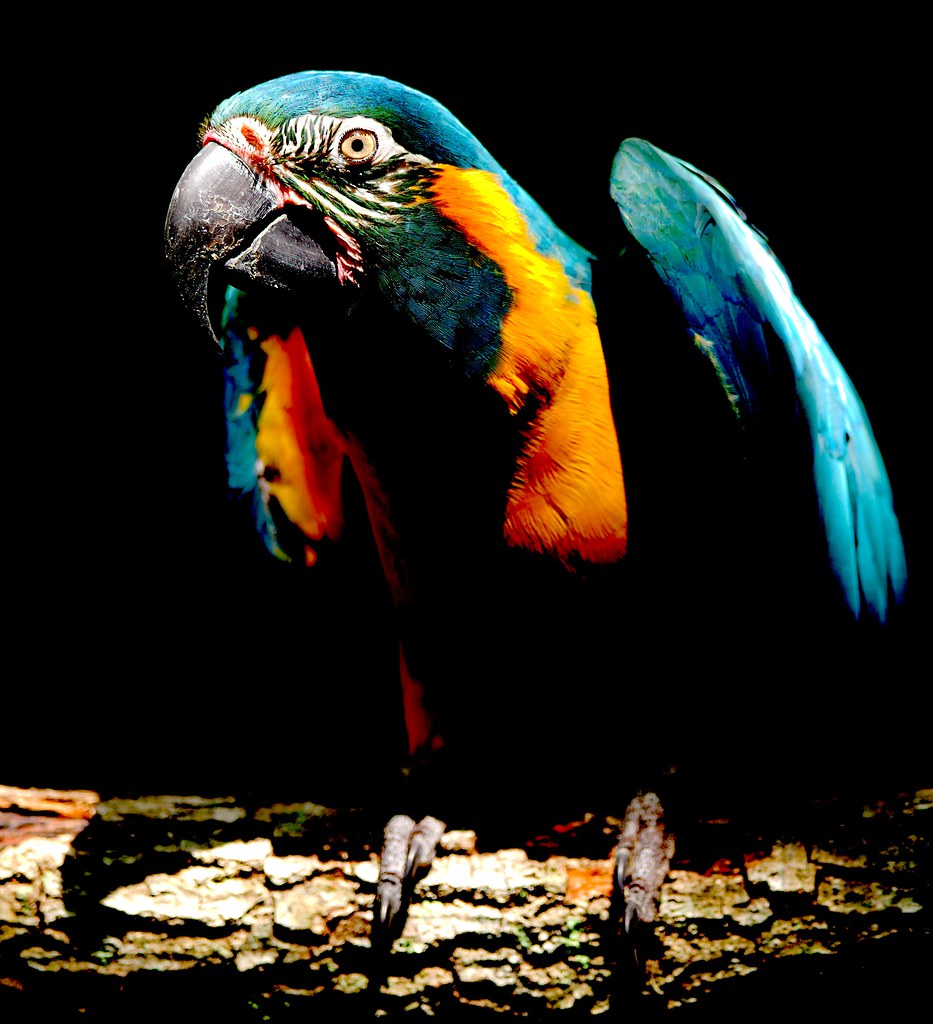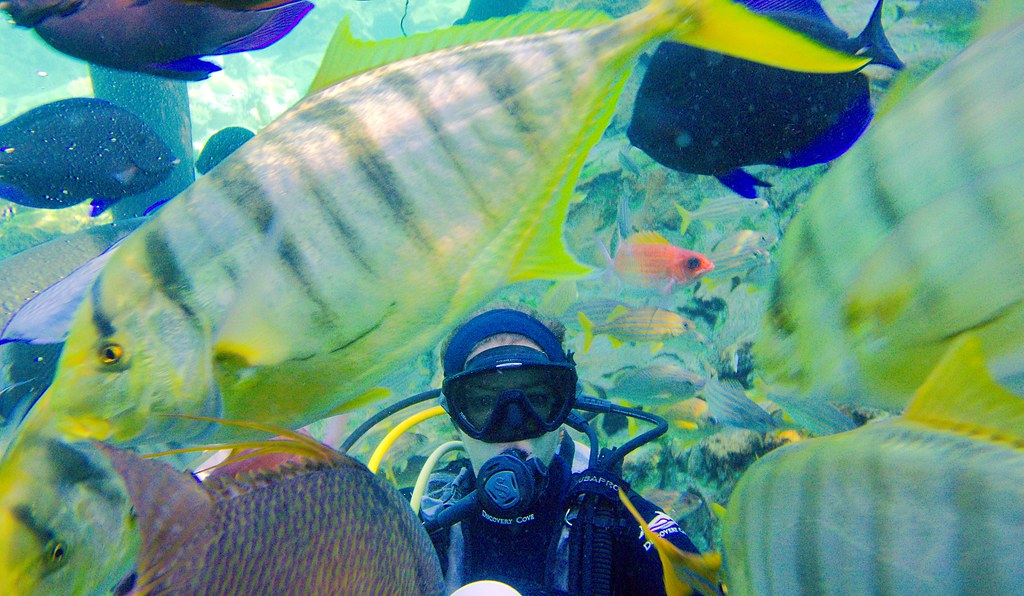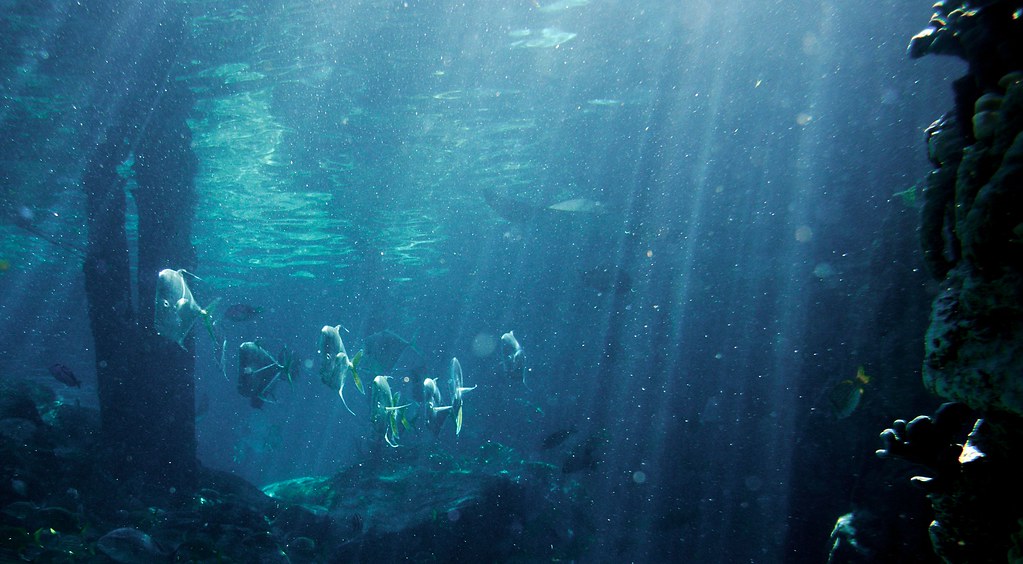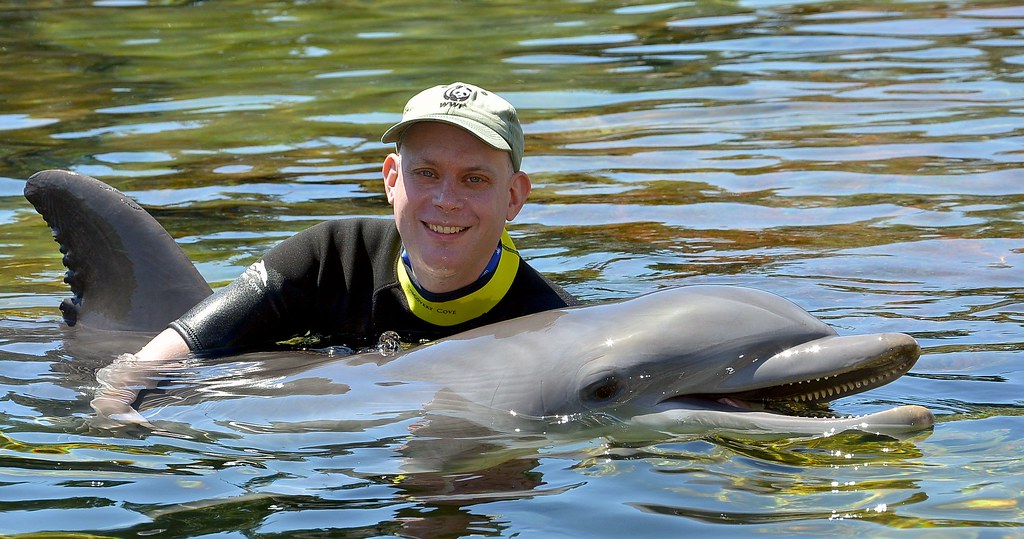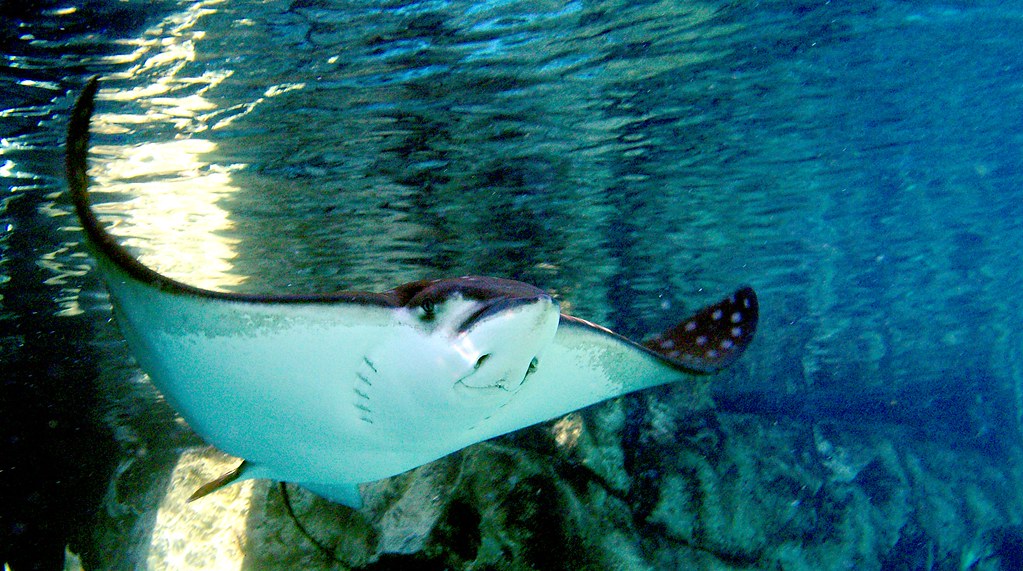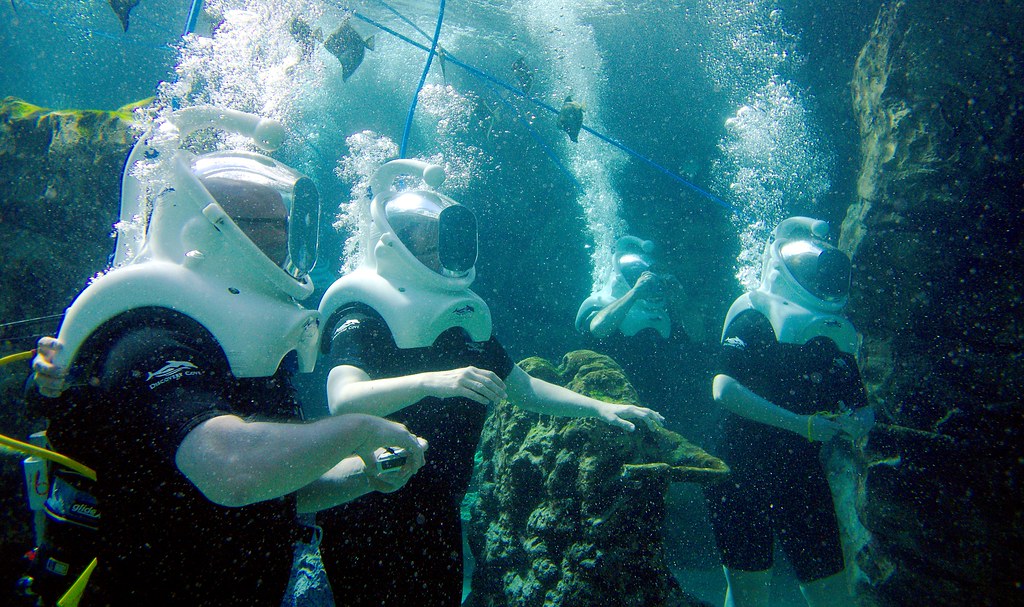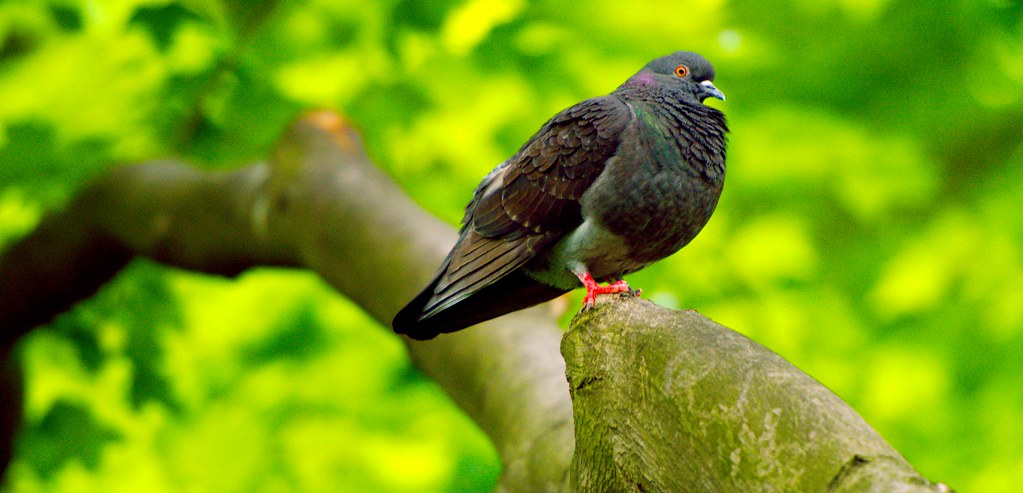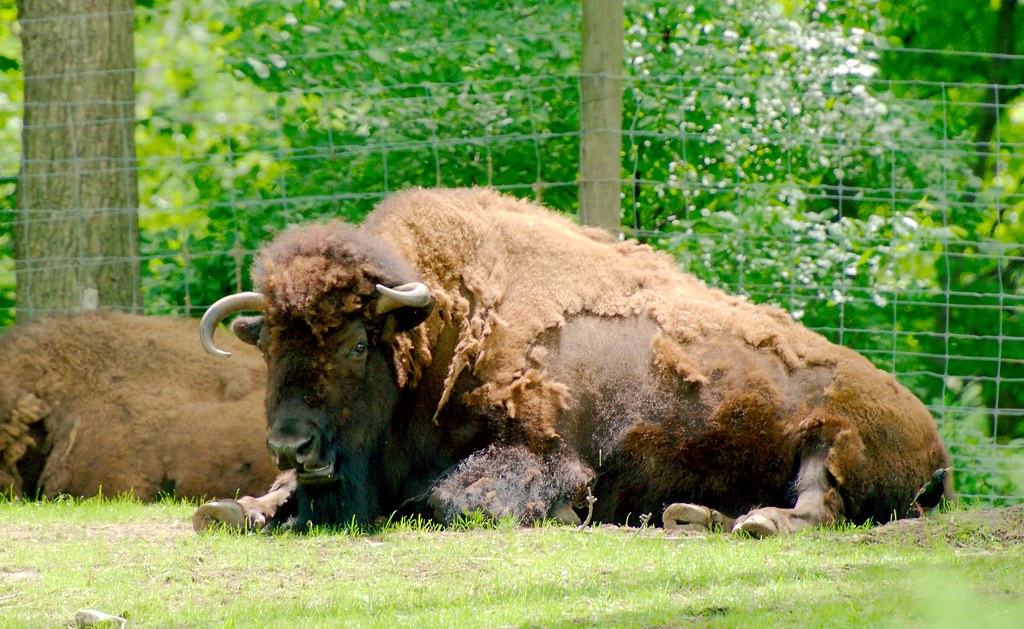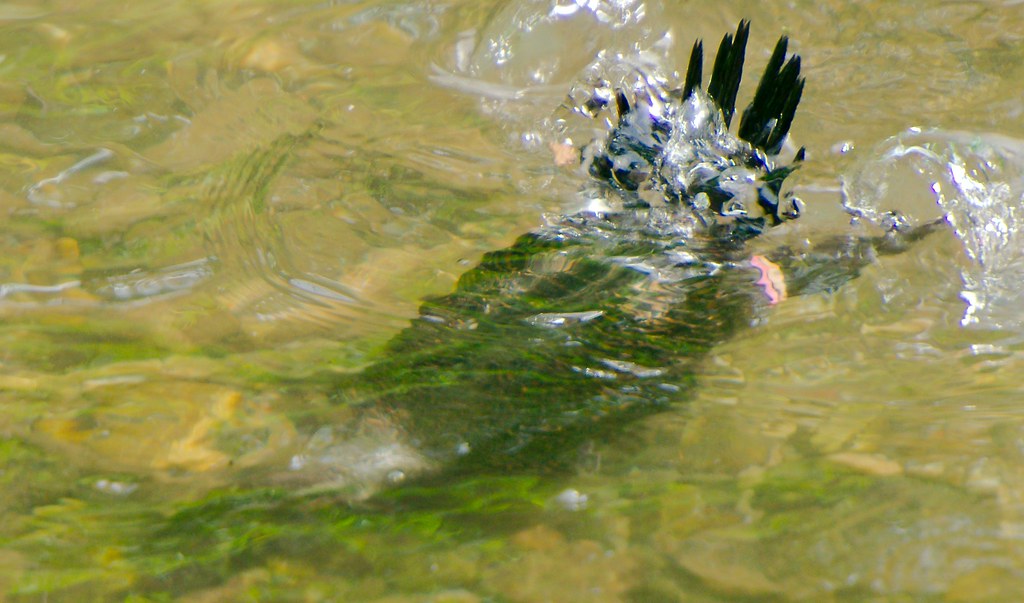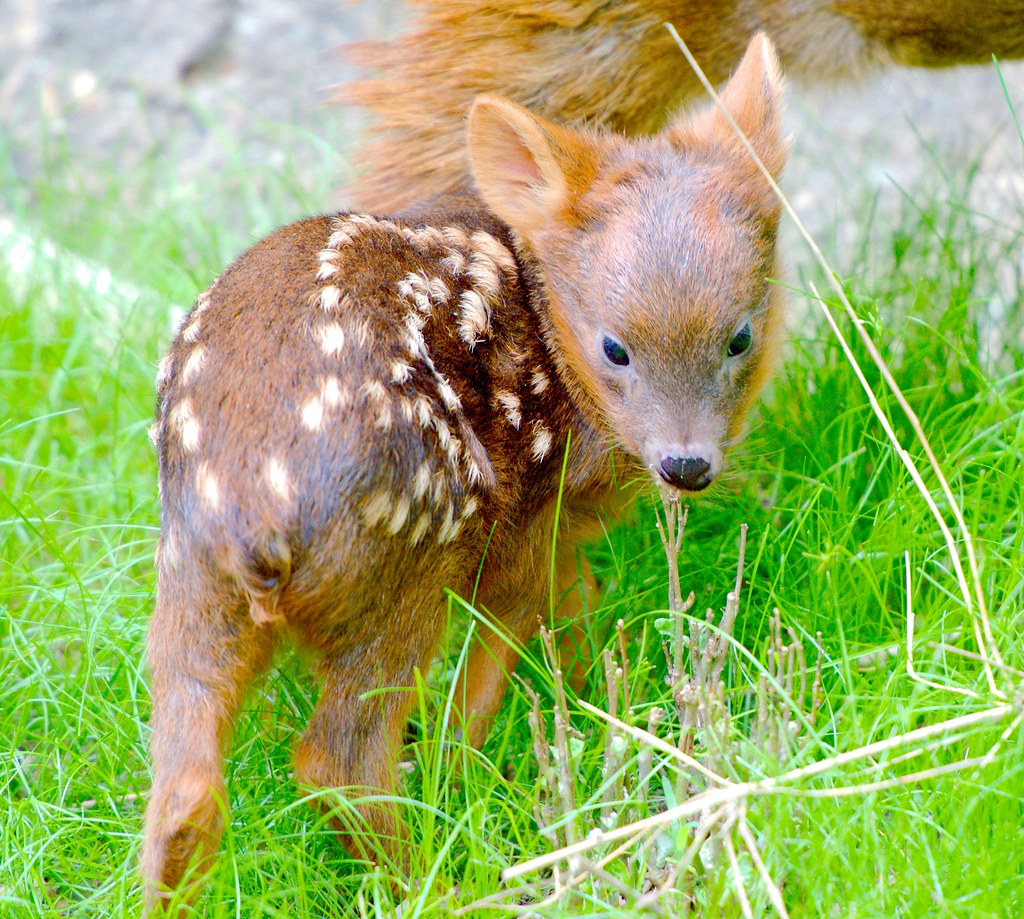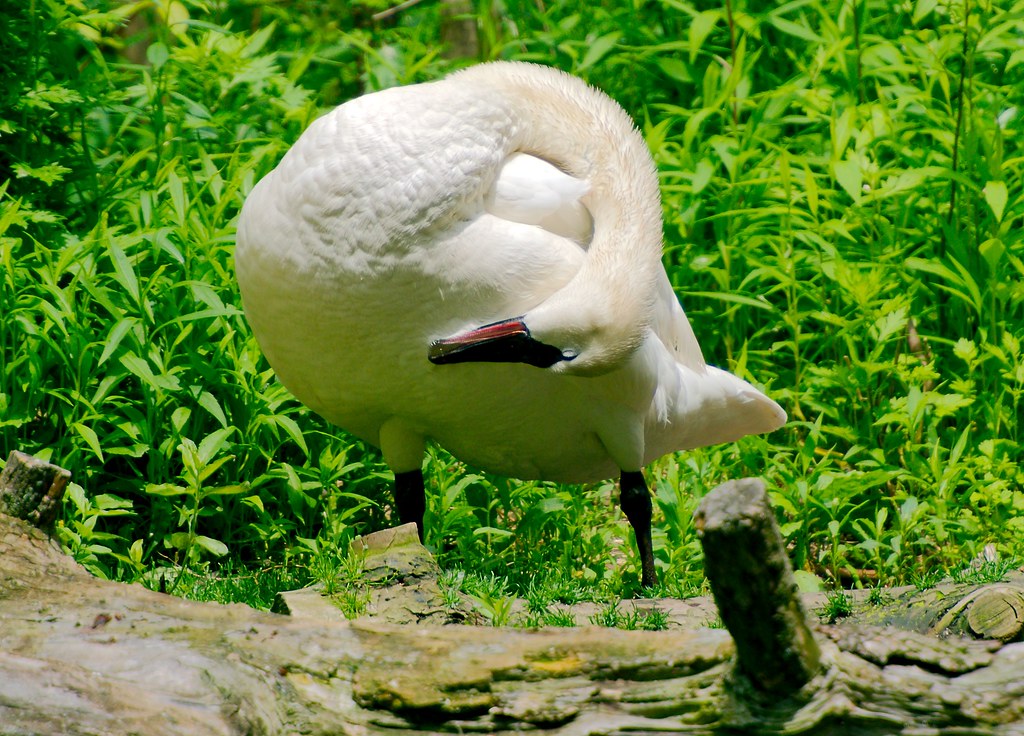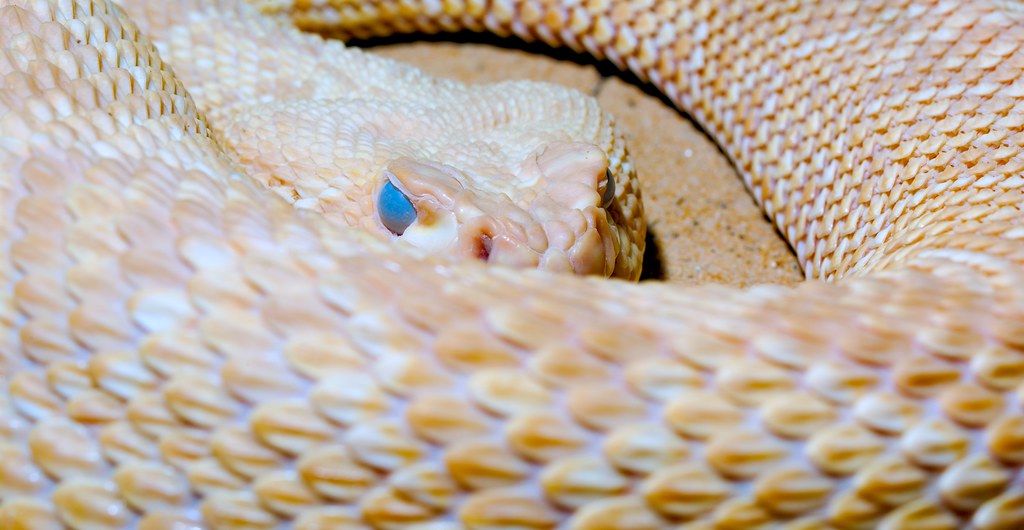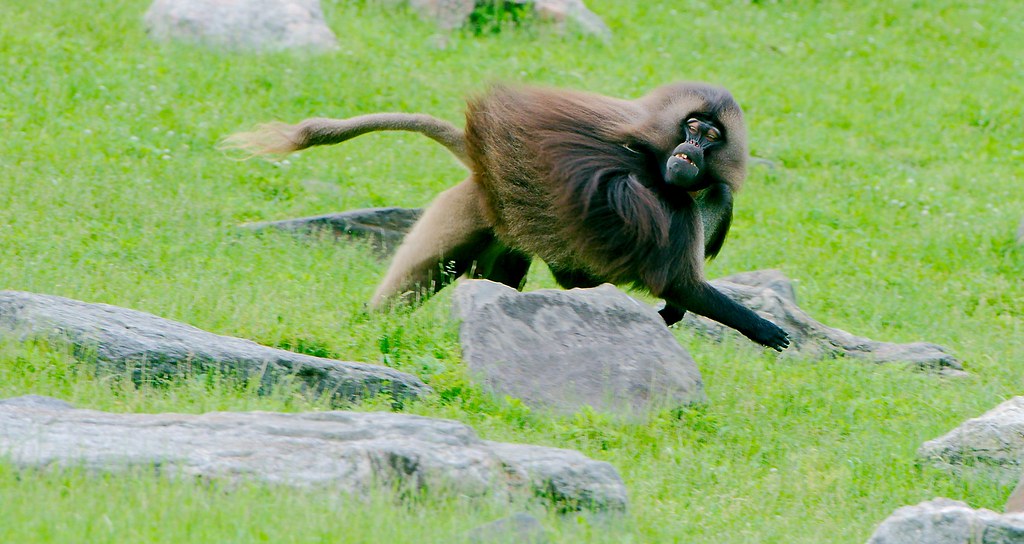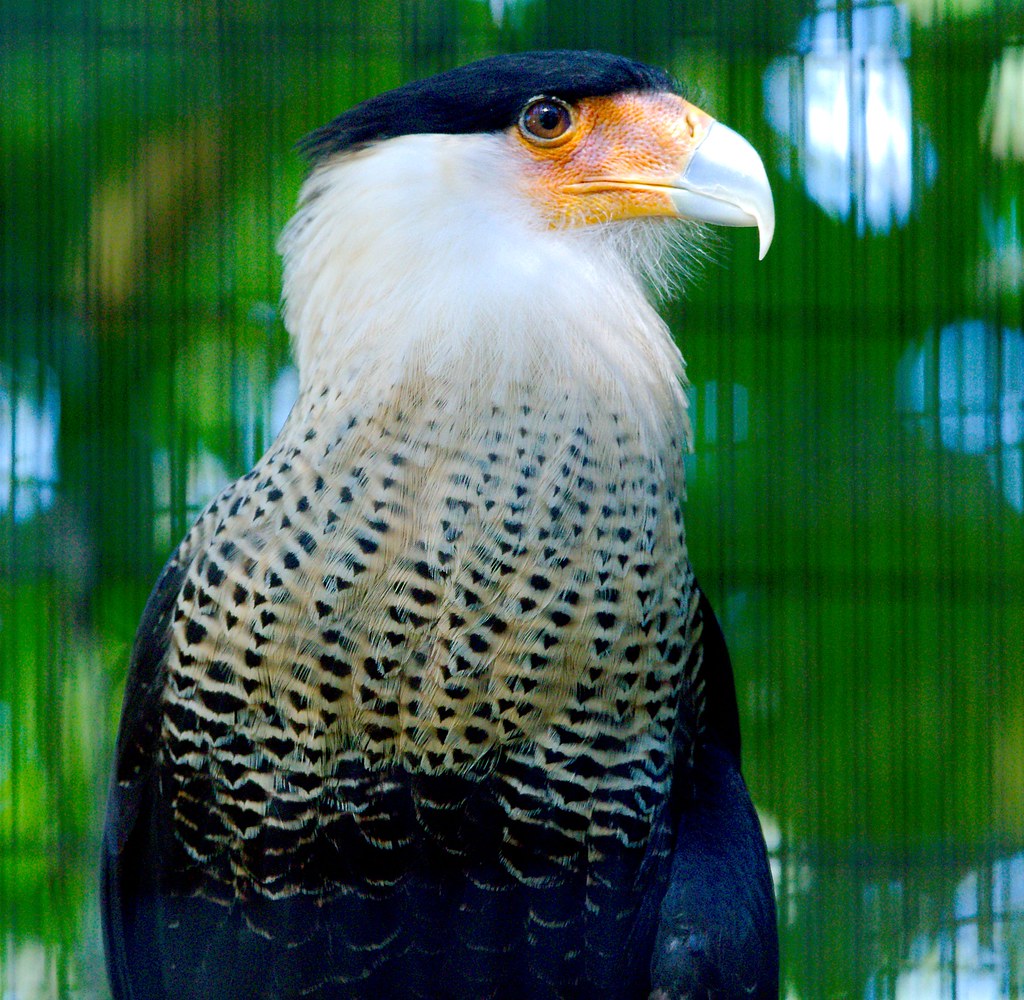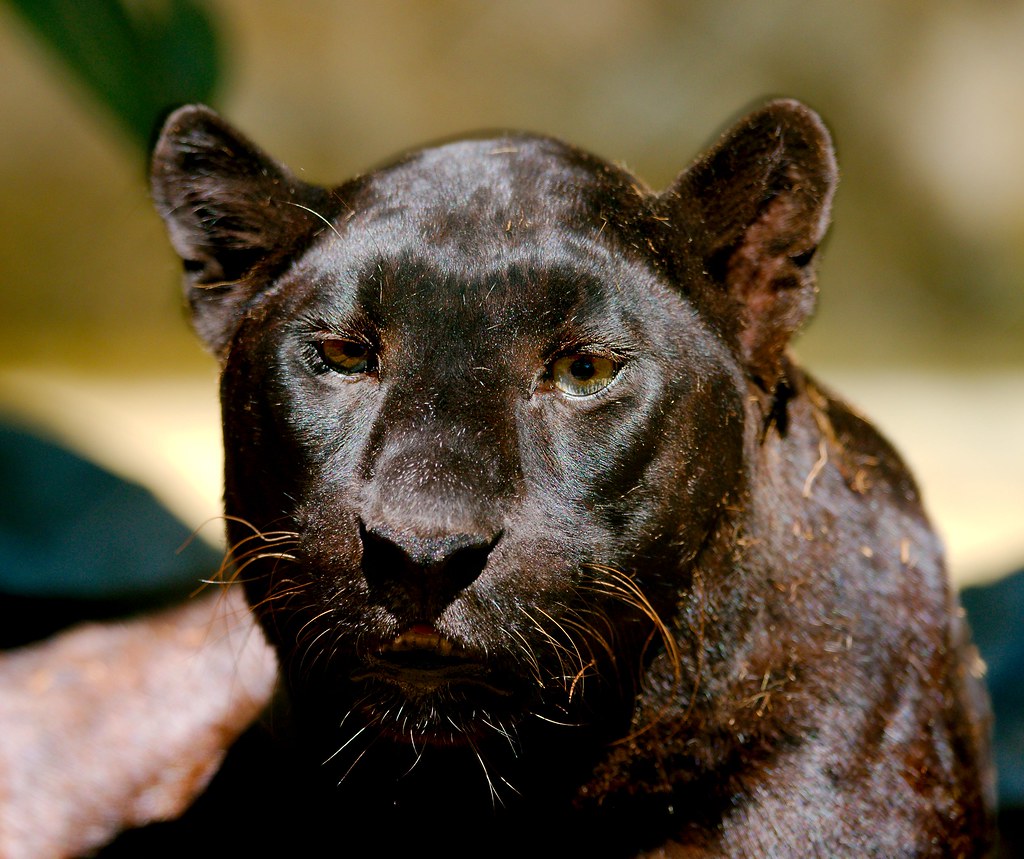While his first costume was striking, Bruce Wayne eventually went in a different direction.
Meerkats not performing Marlowe
Trash can
Diver guide
Fish
Me and a dolphin
Still at Discovery Cove, this was my first time interacting with a dolphin (well, porpoise). As I mentioned yesterday, I am generally in favor of zoos. I know they are not perfect and the non-accredited zoos are often quite awful. One of the places where my personal ethics make me a bit uncomfortable is when “intelligent” species are kept in zoos. As we have been trying to define “intelligent” for generations and seem to be unable to do, I am going to clarify by saying that I am referring to species of a significantly higher than average level of neural complexity that appear to live rich social lives and require constant interaction with their environment to be psychologically healthy. It’s not a great definition, but it does draw a line between octopuses which seem like good problem solvers and dolphins which seem genuinely intelligent. That said, I must admit to a likely human-centric view here.
Anyway, I get a bit uncomfortable when I see great apes and cetaceans in zoos. I tell myself that they wouldn’t necessarily be better off in the wild – great ape habitat is almost entirely gone, and the shallow oceans are far from healthy places to live. Physically, the dolphins are a lot better off in captivity. As for their mental well being, I always had a problem seeing dolphins in huge sterile tanks.
This is where I think that Discovery Cove has made great strides. Yes, the dolphins are taught to perform a routine and interact with guests. This can elicit memories (for those of us old enough to remember) of dancing bears at the circus. However, in talking with the trainers, I was impressed at how much effort was put into first, making the experience safe for the animals and second, designing the entire program around consent.
Discovery Cove has at least one pod of dolphins that live in a bay-like environment. It’s clean, but not sterile in the way that an aquarium is. The dolphins are trained to volunteer to come and play with the humans. They’re allowed to have their preferred trainers and if they don’t want to “work” that day, they don’t. Sure, they’re rewarded for performing with fish and fish-flavored jello, but that’s not all that different from humans being rewarded with money and occasional pizza parties.
While I, personally, did not enjoy the sameness and controlled experience that Discovery Cove offered – mostly because I’ve had experiences much closer to the wild – for the first time, I did not feel sorry for the dolphins. I think this is a big step in the right direction. I am also pleased to note that SeaWorld is reworking their older parks to build this newer understanding of cetacean psychology into the life experiences of all of their animals.
(And before you mention that movie, know that it was as misleading as the anti-Planned Parenthood “baby parts” video. People can edit footage to tell whatever story they want. SeaWorld isn’t perfect, but they’re not monsters either.)
Ray
Humans
This is what the “dive experience” looked like, in the human direction. Everyone was under water with forced air going into the weighted helmets. The air was balanced for buoyancy. The net effect was that people who might have trouble walking or breathing were able to go underwater in ways that may not have been possible before. However, people who are sensitive to pressure making ears pop and such should probably avoid it.
Once underwater, you held onto handrails and walked on the prescribed path. Mostly, it was seeing fish. A side effect of the helmet is that you couldn’t really move your head up and down, which made getting the right angles on photos nearly impossible. So, I don’t recommend it for the photography aspects. Still, it was an interesting experience.
The most interesting thing for me was the moment I walked down the ladder and saw the water close over my head. As soon as that happened, something in my brain went “This is **wrong**, get out now!” It’s weird to be 40 years old and encounter a new instinct. I used logical brain to push that aside and did it anyway and I was fine. However, in that moment I suddenly understood the stories of people suddenly and unexpectedly panicking. Had I not been prepared for that feeling, I could see the instinct overriding the logical brain very easily.
It was interesting.
Me with Urchin
I post a lot of photos from zoos and, for the most part, I am in favor of them.
I am not, however, naive. I’ve been to some, pardon the language, real shitholes. I do not post photos from those places. (This is not a story of one of those places.)
Almost all of my photos come from AZA accredited zoos (CAZA in Canada, EAZA in Europe). These places are required to prove to their peers that the animals are healthy – physically and psychologically. They are required to be involved in the science of conservation and, increasingly, to have some sort of in situ program in place, protecting or rehabilitating specific ecosystems so there will be a place for the animals to live in the wild. Every zookeeper from an accredited zoo that I’ve ever spoken with wishes that animals could live in the wild and be more free from the gawking public.
There is, however, another type of zoo. Discovery Cove (owned by SeaWorld) is an accredited experiential zoo, where it tries to provide something of a “visit to the wild” experience to people who can’t afford the time or money to actually travel to the far reaches of our planet. A lot of the “theme park” zoos are moving in this direction and, in general, I can say it’s positive.
These places are a lot more expensive than a trip to a “regular” zoo, but a hell of a lot less expensive then taking a trip to the tropics. This approach also allows them to streamline the guest experience. For most people, this is great. It allows people with various disabilities to participate in things that would otherwise not be an option for them. This photo is of a “dive experience” where everyone wears pressurized helmets and the group spends about 20 minutes walking through a huge aquarium. If you’ve ever done a real dive, there’s a lot missing. However, it is a lot closer than a lot of people will ever get. From that perspective, I am in favor of this change … mostly.
As someone who has traveled, if not to the far reaches of the world, a bit further than the average American, the sameness of the experience was troubling. It is a lot more like going on a Disney ride than being in the jungle trying to see the flash of feathers that indicates a rare bird that almost no one will ever see. In their attempt to streamline the process for everyone, they’ve lost a lot of the wonder.
Still, there is wonder if you look for it. Being able to enter the environment of a sea urchin instead of pulling them into yours is a different experience. For me, it was one well worth doing once. It’s certainly worth it for people who can never do it any other way. However, I’m not sure if I, personally, will go back.
Pigeon
American Bison
Common Teal
Southern Pudu
Swan
Pigeon
Horse
Leucistic Diamondback Rattlesnake
In the still of the night
He hears the wolf howl
In the still of the night
He feels his heart beating heavy
In the shadow of night
He sees the full moon rise
In the heat of the day
He hangs his head down low
And hide his face from the sun
He will, however, keep away, as rattlesnakes don’t bother you unless you bother them.
